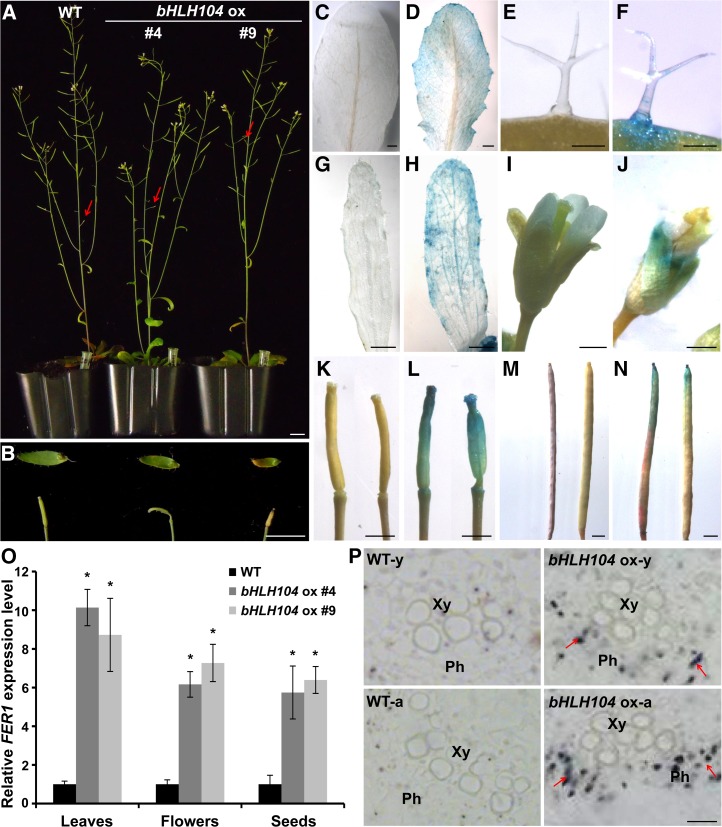Figure 3.
Overexpression of bHLH104 Results in Fe Overaccumulation in Soil Growth Conditions.
(A) Phenotypes of wild-type and bHLH104 ox plants at the reproductive stage. Bar = 1 cm.
(B) Magnified image of cauline leaves and siliques (marked by arrowheads in [A]) in wild-type and bHLH104 ox plants. Bar = 500 μm.
(C) to (N) Perls Fe stain signals in rosette leaves ([C] and [D]), trichomes ([E] and [F]), cauline leaves ([G] and [H]), flowers ([I] and [J]), young siliques ([K] and [L]), and mature siliques ([M] and [N]) of wild-type ([C], [E], [G], [I], [K], and [M]) and bHLH104 ox ([D], [F], [H], [J], [L], and [N]) plants. Bars = 1 mm in (C), (D), (G), (H), and (K) to (N), 100 μm in (E) and (F), and 500 μm in (I) and (J).
(O) The relative expression of FER1 in wild-type and bHLH104 ox leaves, flowers, and seeds. Plants were grown for 6 weeks in soil. The gene expression level in the wild type was set to 1. The data represent means ± sd of three independent experiments. Significant differences from the corresponding wild type are indicated by an asterisk (P < 0.05), as determined by Student’s t test.
(P) Perls/DAB stain for Fe3+ signals in 4-μm cross sections of wild-type and bHLH104 ox young (Y) and aged (A) leaves, showing Fe deposits in phloem of the vessels in bHLH104 ox plants (indicated by arrows). Ph, phloem; Xy, xylem. Bar = 10 μm.

